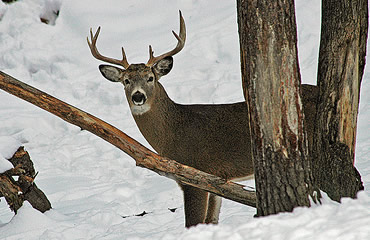Cold weather considerations for late-season die-hards.
Many of us have hung up our hunting gear, but there are still some late-season opportunities to fill a tag throughout much of the country.
A majority of the late seasons require primitive weapons, and cold weather can have more of an impact on bows and muzzleloaders than on other firearms.
If you're bowhunting, even in the Deep South, chances are you'll be wearing a glove. You need to practice at least a few shots with whatever gloves and coats you plan to wear.
Gloves, especially those with tacky palms, can significantly affect your grip by not letting the bow settle into your hand. This will cause you to torque the bow and can throw off your point of impact. Switching to a heavier coat also can create contact with your bowstring that wasn't a factor in warmer weather. I once took some practice shots during a cold-weather bowhunt only to learn I was hitting a foot left of the target because my bowstring was contacting my coat sleeve. The coat was so think that I didn't even feel it.
Muzzleloader hunters should be aware of possible moisture problems related to moving their gun from extreme cold to warm locations, which creates condensation. Wet powder and pellets won't fire, so avoid that. You can remove the primer and be perfectly safe letting your muzzleloader in your vehicle (the trunk or bed of your pickup would be best for the same temperature-change reasons).
In short, once your muzzleloader gets cold, it's best to keep it cold, even between sits. If you must take your muzzleloader indoors, or if there will be a long period of time between hunts, consider unloading the gun, or firing it to empty the barrel and get rid of the powder.
Whether you want to fill the freezer or have your eye on a big buck, there are still some opportunities to fill a tag. Just be aware it's a little different in the extreme cold.
Read Recent Tip of the Week:• On the Down Low: There is no foolproof way to beat a whitetail's nose.




.png)